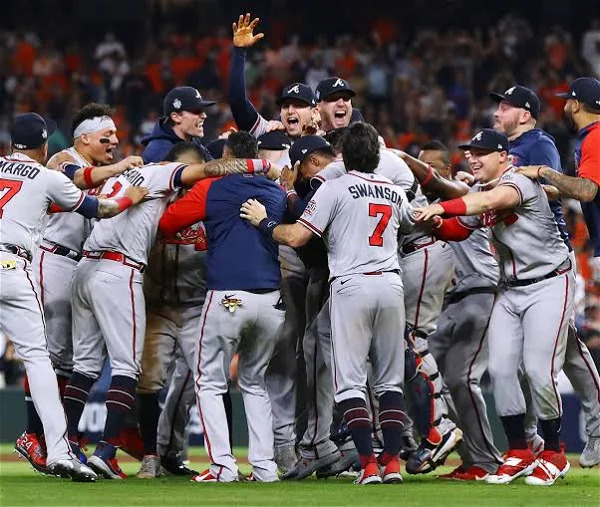
Breaking: A closer look at Ray Kerr and why the Braves made this move
The Atlanta Braves have been highly active in the trade market this offseason. Many of the moves appear to include taking on money for key players. The Kelenic deal has been the most significant thus far, but the move that brought in Ray Kerr appears to be a bit perplexing at first. This transaction was made even more intriguing by the fact that the Braves virtually paid for Matt Carpenter’s contract in order to simply release him in order to bring in Kerr.
We may never know what happens behind closed doors in the front office, but we can make some educated guesses as to why this deal was made.
Let’s take a closer look at this transaction and what Kerr brings to the table. First and foremost, the Braves clearly lacked lefty relievers last season. A.J. Minter, Brad Hand, Danny Young, Lucas Luetge, Dylan Lee, and Taylor Hearn were the Braves’ only LHP relievers who pitched. Only 161.1 innings were pitched by a lefty reliever, with Minter accounting for 40.1 percent of those innings.
With the addition of Aaron Bummer this offseason, it is evident that the front staff sees this as an area to upgrade/add depth.
It is fair to say that adding another starting pitcher would be nice, but when you have team that led MLB in fWAR in 2023 with a roster that is largely still the same, it gives you the ability to take on salary to tweak areas like adding lefty relievers of interest.
Essentially, it appears the Braves are paying up front for educated guesses on players that could break out in areas on their roster that could be improved with multiple years of team control left at a cheap price in the future. Of course, odds are that these moves are based on actual analytical research and not just gut feelings, so let’s look deeper into the possibility of why Ray Kerr was intriguing besides the fact that he is a lefty.
Kerr had an ERA of 4.33 and a FIP of 4.18 in 27.0 innings of MLB action in 2023, both of which are slightly worse than average. In terms of ERA+, which takes into account the pitcher’s environment, he was 5.0 percent worse than the league average in terms of preventing earned runs.
It should be noted that in small sample sizes, ERA is quite volatile.
In AAA, he posted an outstanding 2.25 ERA in 36.0 innings. He had a high strikeout rate in both AAA and MLB. He struck out 30.7 percent of MLB batters (11.7 per nine innings) and 29.0 percent of AAA batters.
For comparison, Joe Jimenez led all Braves relievers (minimum 10.0 innings) with 11.7 strikeouts per nine innings. Pierce Johnson led the Braves relief group with 12.2 strikeouts per nine innings, and he, like Jimenez, received an extension this offseason.
With such a high strikeout percentage, he definitely misses a lot of bats. Swings and misses were 32.2 percent of the time against him. If he had enough pitches to be considered “qualified,” he would have pitched better at missing bats than 85.0 percent of MLB.
Kerr has some exciting stuff. His fastball averaged 96.0 MPH. Only 15.0 percent of MLB pitchers averaged a fastball with a higher velocity. For reference, the average 4-seamer last season was 94.2 MPH. It makes it even more impressive if we look at only LHP. LHP averaged a full MPH lower at 93.2 last season.
He was also better than league average at preventing walks as well in his limited action last season. The league average was an 8.3 percent rate, whereas Kerr’s was lower at 7.9. However, over his six season tenure in the minors he did walk 11.6 percent of batters.
Outside of missing bats, he does have some red flags. When players did make contact last season, they made solid contact quite often. His xwOBA on contact was an alarming .453, and his hard hit percentage against was 46.4 percent. For reference, the league average of hard hit percentage against was 39.4 percent.
Of course, these are small sample sizes, so they could be volatile, and Kerr has some incredible ability to miss bats that has been the case for most of his professional career (including minors).
Kerr has a minor league option remaining so there is a chance that Atlanta stashes him in the minors as a depth option this season. Should the Braves pitching lab be able to unlock his potential, he is under team control through the 2029 season.
Taking on Carpenter’s salary, just for this season for a player that could potentially contribute for six more years could end up being one of the better moves made in MLB this season should it work out.
Leave a Reply